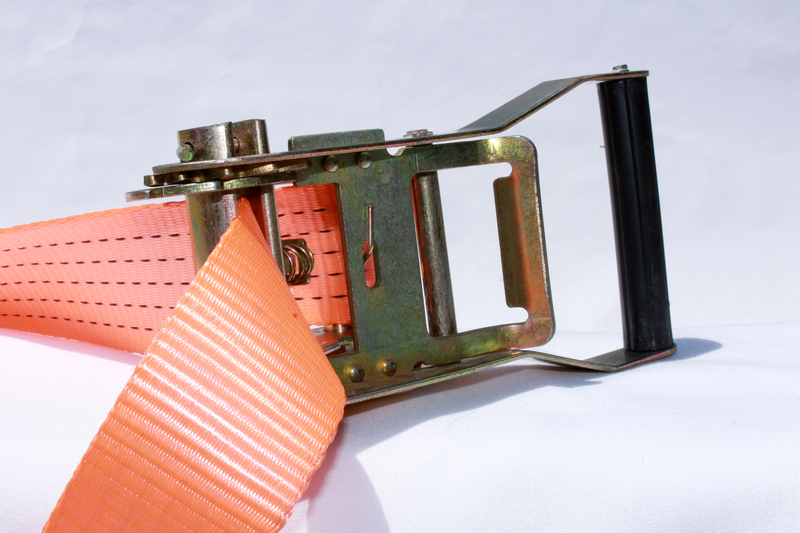Comprehensive Guide to Packing And Moving Your Home
Posted on 21/05/2025
Comprehensive Guide to Packing and Moving Your Home
Moving to a new home can be both exciting and overwhelming. Efficient packing and smart moving strategies are essential for a successful transition. In this comprehensive guide, you'll find actionable advice, insightful tips, and expert strategies to ensure your home-moving experience is as smooth and stress-free as possible.

Why Planning Matters in House Relocation
Proper planning lays the groundwork for an organized and stress-free house move. Whether you're relocating across town or to a different state, creating a detailed plan will save you time, money, and effort. The key to an efficient move is starting early and breaking the process into manageable steps.
- Less stress: Organization reduces the chaos of moving day.
- Time-saving: A plan keeps everything on track and avoids last-minute rushing.
- Cost control: Prevents unnecessary expenses.
- Security: Ensures your belongings reach the new destination safely.
Step 1: Create Your Packing and Moving Checklist
It's crucial to have a detailed checklist for moving your home. Begin your preparation several weeks before your moving date.
- List the tasks you need to complete each week.
- Set deadlines for packing, hiring movers, and notifying utility providers.
- Use apps or printable templates to keep track of progress.
Step 2: Declutter Before You Pack
Packing for a move offers a perfect opportunity to declutter your home. Streamlining your possessions reduces moving costs and makes unpacking easier at your new residence.
- Sort by category: Go room by room and sort belongings into keep, donate, sell, or discard.
- Be honest: If you haven't used an item in the past 12 months, consider letting it go.
- Host a garage sale or list items online to earn extra cash for your move.
Packing Strategies for a Stress-Free Move
Gather High-Quality Packing Supplies
Having the right materials on hand is essential for protecting your belongings. Below are the essentials you'll need when packing for your home move:
- Sturdy boxes in various sizes
- Packing tape and dispensers
- Bubble wrap and packing paper for fragile items
- Permanent markers for labeling
- Plastic wrap for securing drawers and furniture
- Specialty boxes: Wardrobe, dish pack, and electronics boxes
Tip: Obtain free boxes from grocery stores, bookstores, or community groups to save on costs.
How to Pack Efficiently and Safely
- Always pack room by room and label each box for easier sorting at your new home.
- Use soft items, like towels or bedding, to cushion breakables.
- Seal liquids in plastic bags before placing them in boxes.
- Don't overload boxes--keep them under 50 pounds to avoid injury.
- Disassemble large furniture to save space and prevent damage.
- Place heavier items on the bottom, lighter items on top.
Packing Room-by-Room: Best Practices
1. Kitchen
- Use dish pack boxes and bubble wrap for glassware.
- Bundle utensils and small gadgets together.
- Defrost and clean your refrigerator in advance.
2. Bedrooms
- Pack out-of-season clothes first.
- Use wardrobe boxes for hanging items to prevent wrinkles.
- Disassemble beds on the moving day.
3. Living Room
- Protect electronics in original packaging if available.
- Wrap picture frames and mirrors in packing paper or blankets.
- Remove lightbulbs from lamps and pack them separately.
4. Bathrooms
- Pack a travel toiletry bag for your first night.
- Group small items in zip-lock bags to avoid spills.
5. Garage and Storage
- Drain fuel from power tools.
- Dispose of hazardous materials properly.
- Bundle gardening tools together with rope or tape.
Hiring Professional Movers vs. DIY Moving
Deciding between hiring professional movers and a do-it-yourself (DIY) move is a key step in the moving process. Consider these factors:
Benefits of Professional Movers
- Expertise and efficiency: Movers are trained to pack and handle heavy or delicate items safely.
- Time-saving: They streamline the lifting and transport process.
- Insurance coverage often included for your possessions.
- No need to rent a truck or source equipment.
When to Choose DIY Moving
- Cost-effective: Especially for small or local moves.
- Flexibility: Move at your own pace.
- Rent only the vehicle and equipment you need.
Tip: Get at least three quotes from moving companies and read reviews to ensure you're making the best choice for your needs and budget.
Smart Tips for a Stress-Free House Move
Keep an Essentials Box
Pack a clearly labeled box with items you'll need right away: toiletries, chargers, a change of clothes, medication, basic tools, and important documents. This will save you from frantic searching during your first night in your new home.
Protect Important Documents and Valuables
Gather passports, birth certificates, financial records, and sentimental jewelry in a secure, easily accessible container you transport personally.
Notify Services and Change Your Address
- Set up mail forwarding with your postal service.
- Notify banks, subscriptions, insurance providers, and government agencies of your new address.
- Schedule utility shut-off and reconnect in your new location ahead of time.
Take Photos of Your Electronics Setups
Before disconnecting cables, take pictures of your TV, computer, and entertainment systems. This will make reassembly a breeze at your new home.
Enlist Help from Friends and Family
Moving is easier with a support system. Assign specific tasks and offer refreshments to keep spirits high. Remember to thank your helpers with a meal or a small token of appreciation.
Moving Day: Countdown and Timeline
One Month to Moving Day
- Book movers or a rental truck.
- Begin gathering packing supplies.
- Start decluttering and organizing belongings.
Two Weeks Before Moving
- Continue packing non-essentials.
- Service your car if relocating long-distance.
- Confirm moving arrangements with hired movers.
One Week Before Moving
- Pack electronics, kitchen items, and clothes.
- Label boxes with room and contents.
- Dispose of food that won't move well.
- Set aside essentials for your first night.
Moving Day
- Pack up bedding and last-minute items.
- Meet with movers and review the inventory list.
- Do a final walkthrough to check for forgotten items.
- Make sure utilities are switched off, doors and windows are locked.
Unpacking and Settling into Your New Home
Prioritize the Essentials
Begin by setting up the bedrooms, bathrooms, and kitchen. Make beds, plug in appliances, and stock basic toiletries. A functional space will help you feel settled quicker.
Unpack One Room at a Time
- Start with the most important rooms, such as the bedroom and kitchen.
- Use your labeled boxes to make the process smoother.
- Break down boxes as you go to keep your space clutter-free.
Check All Items and Report Issues
- Compare your inventory list to delivered boxes.
- Note any damages and report them quickly to your moving company if needed.
Update Your New Address
- Register with your local authority if required.
- Update your driver's license and vehicle registration.
Additional Tips for an Easy Move
- Label everything: Include the destination room and a brief description of contents.
- Stay hydrated and take breaks: Moving can be physically demanding--look after yourself.
- Keep pathways clear to avoid accidents during the move.
- Double-check utility connections at your new home before moving day.
- Make arrangements for kids and pets to keep them safe and out of the chaos.

Frequently Asked Questions About Packing and Moving Homes
How far in advance should I start packing for a move?
Begin packing non-essential items at least 4-6 weeks prior to your move. The earlier you start, the more organized and less rushed you'll feel.
What should I pack last before moving?
Essentials such as daily-use toiletries, cookware, a few outfits, and your important documents should be packed in an easily accessible box at the very end.
Do I need insurance for my move?
Yes. Moving insurance provides peace of mind in case items are lost, stolen, or damaged during the move. Many professional moving companies offer coverage, but you can also buy additional insurance if needed.
How can I make unpacking easier?
Label each box with the room and description, set up one room at a time, and dispose of boxes as you go. Enlist help if possible and give yourself manageable daily targets.
Conclusion: Enjoy Your Fresh Start
Relocating your home doesn't have to be stressful. With thoughtful organization, the right packing techniques, and a proactive approach, your house move can be a positive, even enjoyable experience. Follow this comprehensive guide to packing and moving your home for a seamless transition--and embrace the excitement of your new beginning!
Remember: Preparation is the secret to a successful move. Good luck, and happy moving!









